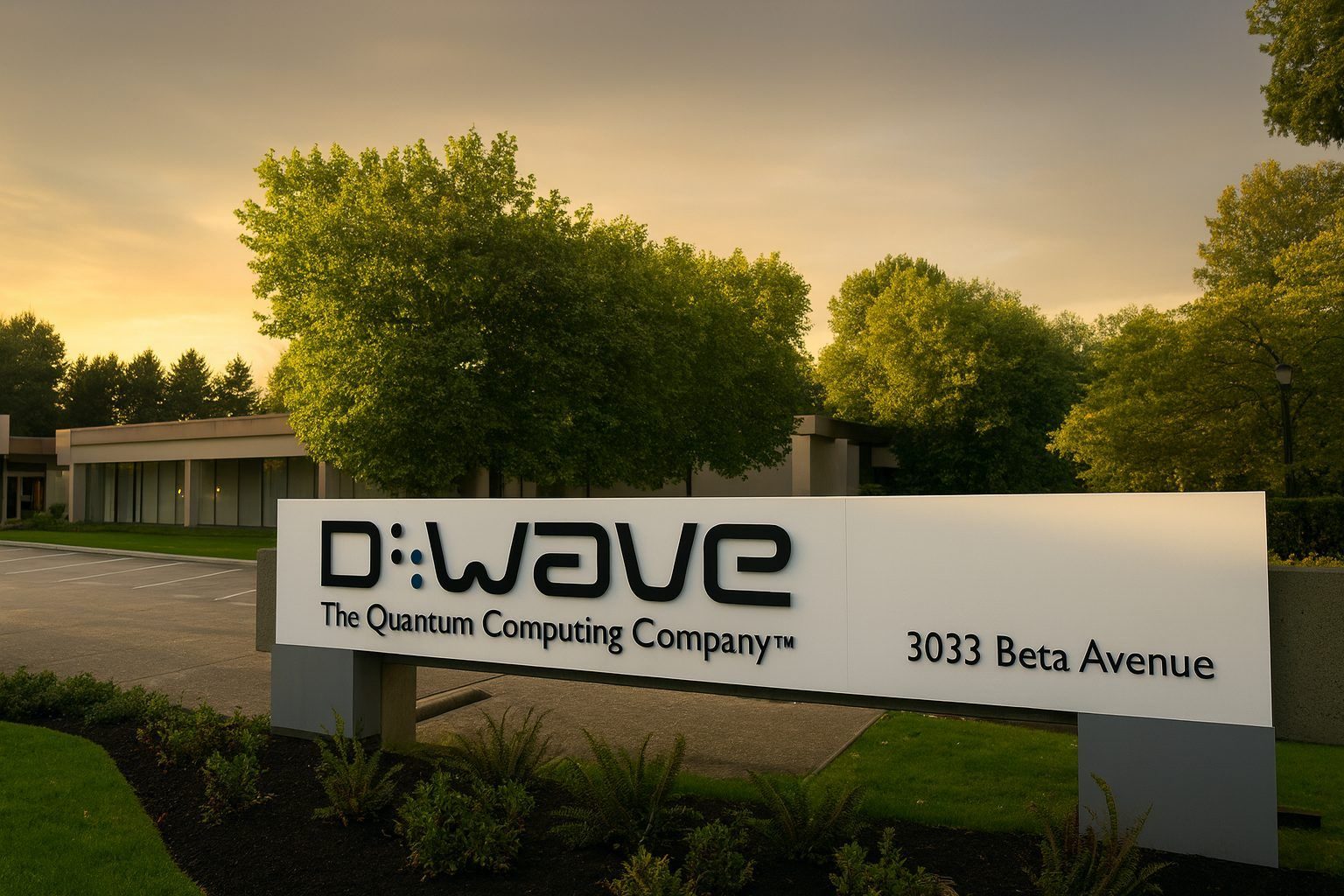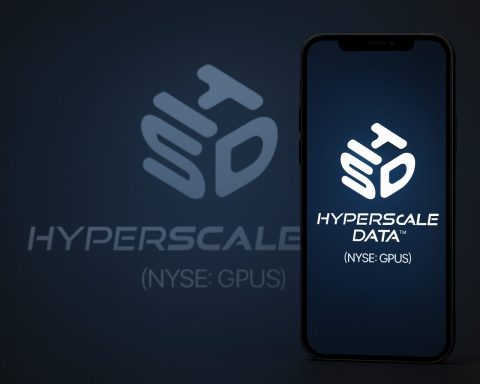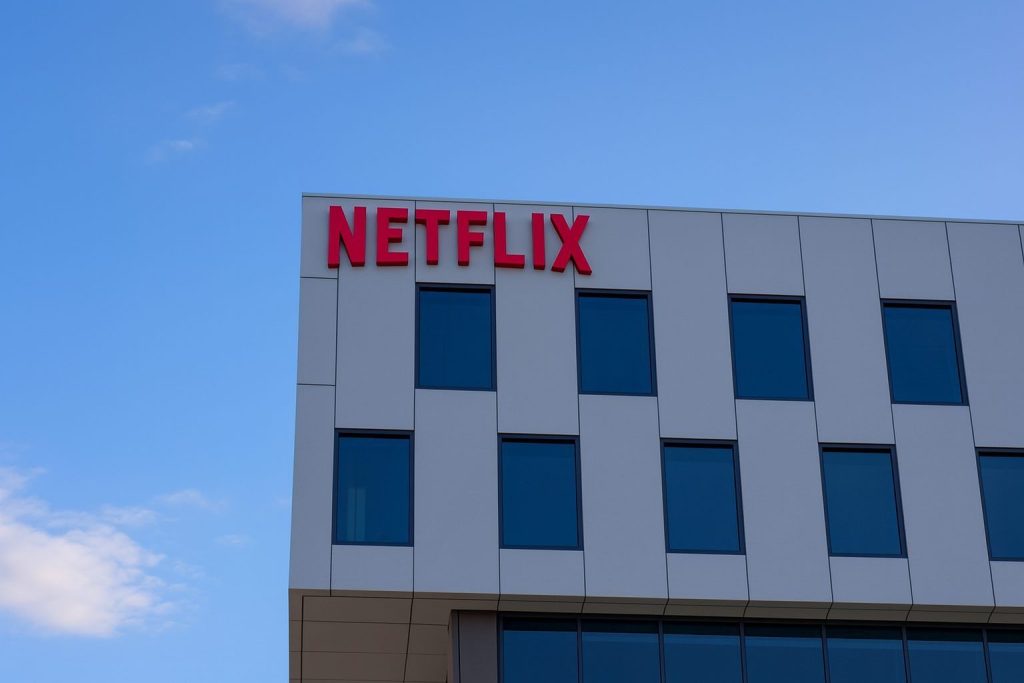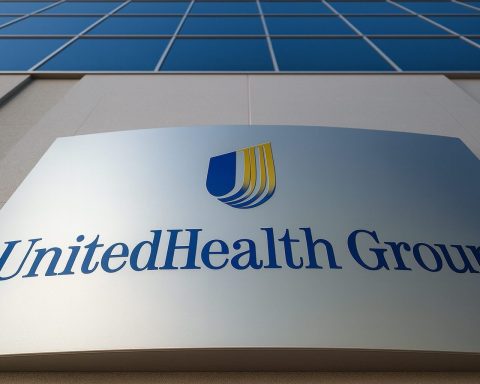November 24, 2025 – Market news & analysis on D‑Wave Quantum Inc. (NYSE: QBTS)
Key Takeaways
- QBTS stock is sharply higher today, trading around $22.3 per share, up roughly 9–10% on heavy volume, after a turbulent week marked by insider selling and warrant-related volatility.
- Over the last year, D‑Wave Quantum has delivered an eye‑popping ~941% return, but the stock remains more than 50% below its recent 52‑week high near $47, underscoring just how volatile this quantum computing play has become. [1]
- Q3 2025 results showed revenue roughly doubling to $3.7 million, with improved margins but a GAAP net loss of $140 million, mostly driven by non‑cash warrant‑related charges rather than day‑to‑day operations. [2]
- The company completed the redemption of all outstanding public warrants, raising about $54.6 million in cash and removing a complex derivative overhang, at the cost of additional share dilution. [3]
- A highly visible CFO share sale worth about $4.58 million, alongside mixed analyst commentary and sector-wide quantum computing jitters, is keeping risk perceptions elevated even as Wall Street models strong long‑term growth. [4]
QBTS Stock Price Today: A Big Bounce in a High‑Beta Name
As of the latest quote on Monday, November 24, 2025, D‑Wave Quantum Inc. (NYSE: QBTS) is trading around $22.34, up about $1.93 on the day, a move of roughly 9–10%.
Intraday, the stock has:
- Traded between roughly $20.09 and $22.45
- Seen volume near 15 million shares, versus an average daily volume of about 52.7 million shares [5]
Despite today’s rebound, QBTS remains extremely volatile:
- 52‑week low: about $1.97
- 52‑week high:$46.75 (the stock is still just over 50% below that peak) [6]
- 12‑month performance: roughly +941% according to insider‑trade reporting around the CFO sale [7]
In other words, even after a brutal pullback from its October highs, QBTS is still a multi‑bagger over the last year — and today’s move continues that roller‑coaster pattern that has come to define quantum computing stocks. [8]
What D‑Wave Quantum (QBTS) Actually Does
D‑Wave Quantum is a pure‑play quantum computing company. It develops and delivers:
- Quantum computing systems, primarily based on quantum annealing,
- Cloud‑delivered access to those systems (“quantum computing as a service”), and
- Professional services to help customers design and deploy quantum applications. [9]
Unlike some rivals focused solely on gate‑model systems, D‑Wave is:
- Today a commercial leader in annealing‑based quantum computers, targeting optimization problems in logistics, AI inference, financial modeling, and manufacturing. [10]
- Simultaneously developing a gate‑model platform, making it one of the few companies publicly committed to both annealing and gate‑model architectures. [11]
That dual‑track strategy has helped the company secure enterprise and government customers across Europe, North America, and Asia, but it also demands heavy R&D spending — and investors are currently paying a steep price for that growth.
Fundamentals Snapshot: Tiny Revenue, Huge Valuation
Even after recent volatility, QBTS still carries a multi‑billion‑dollar valuation:
- Market cap: about $7.8 billion
- Enterprise value to sales (EV/Sales): roughly 290× on trailing‑12‑month revenue
- Quick ratio / current ratio: both above 50×, reflecting a large cash balance after multiple capital raises
- Debt‑to‑equity: ~0.06, indicating relatively low financial leverage [12]
On the growth side, D‑Wave’s top line is scaling fast:
- Q3 2025 revenue:$3.7 million, roughly double the $1.9 million reported a year ago
- Sequential growth: revenue increased from $3.1 million in Q2
- Trailing 9‑month revenue: about $21.8 million, up more than 200% year over year [13]
But profitability remains a major concern:
- GAAP net loss in Q3 2025:$140 million, driven largely by about $121.9 million in non‑cash charges related to warrant remeasurement and exercises.
- Adjusted (non‑GAAP) net loss:$18.1 million, or $0.05 per share, an improvement from a $0.12 loss per share a year earlier. [14]
So while Q3 showed clear operational progress (strong revenue growth, better margins, rising bookings), that progress is currently being filtered through layers of equity‑linked financing and non‑cash accounting noise — a key driver of recent share‑price whipsaws.
Recent Catalysts Behind QBTS’s Latest Moves
Today’s pop in QBTS doesn’t come out of nowhere. Several major catalysts from the past month are still reverberating through the stock.
1. Q3 2025 Earnings: Revenue Doubled, Losses Skewed by Warrants
D‑Wave’s Q3 2025 earnings report on November 6 set the tone for the current trading range. Key highlights:
- Revenue doubled year over year to $3.7 million, beating many analyst expectations. [15]
- GAAP gross margin climbed into the 70%+ range, while non‑GAAP gross margin approached 78%, reflecting better utilization of the company’s Leap cloud platform and system upgrades. [16]
- Bookings reached $2.4 million in Q3, then more than $12 million in additional bookings were secured after quarter‑end, signaling ongoing commercial traction. [17]
However, the report also showed:
- A GAAP net loss of $140 million, mostly tied to non‑cash warrant charges, not cash operating burn.
- Adjusted EBITDA loss expanding, underscoring that the business is still far from self‑funding. [18]
Initially, the market sold off on the headline loss and valuation fears, even as multiple outlets highlighted that the core operating trends were directionally positive. [19]
2. €10 Million European Contract and Industrial Proof‑of‑Concepts
Part of the renewed enthusiasm around QBTS stems from concrete commercial wins:
- €10 million (about $11.6 million) contract with Swiss Quantum Technology SA (SQT) to deploy a D‑Wave Advantage2 annealing quantum computer in Italy. The agreement grants SQT access to 50% of the system’s capacity for five years, with an option to purchase the system outright. [20]
- The deployment supports Italy’s Q‑Alliance initiative, positioning D‑Wave as a key player in Europe’s emerging quantum infrastructure. [21]
- A joint project with BASF demonstrated that D‑Wave’s hybrid quantum‑classical workflow could cut a BASF facility’s production scheduling time from around 10 hours to seconds, while reducing lateness and setup times by double‑digit percentages. [22]
These deals help counter the narrative that quantum computing is still purely experimental, giving D‑Wave real‑world case studies in manufacturing and government‑backed infrastructure.
3. Redemption of Public Warrants: Cleaner Capital Structure, More Cash — and Dilution
On November 21, 2025, D‑Wave announced it had completed the redemption of all outstanding public warrants. According to the company:
- Roughly 4.75 million warrants were exercised at $11.50 per share, generating about $54.6 million in cash proceeds and adding around 6.9 million shares of common stock.
- The remaining 270,820 warrants were redeemed for $0.01 each, and no public warrants remain outstanding. [23]
This move:
- Strengthens the balance sheet with additional cash, extending the company’s runway for R&D and commercialization.
- Simplifies the capital structure, removing a volatile derivative liability that had been distorting GAAP earnings.
- Simultaneously adds share dilution, potentially capping upside in the near term as the market digests new supply.
Analysts and commentators have generally framed this as a net positive for financial flexibility, but one that doesn’t solve the long‑term profitability puzzle. [24]
4. CFO Insider Sale: $4.58 Million Transaction Raises Eyebrows
A key overhang on sentiment has been insider selling, particularly by D‑Wave’s CFO:
- On November 20, 2025, CFO John M. Markovich sold 200,000 shares, worth about $4.58 million, at a weighted average price of $22.94 (trades ranged roughly from $21.04 to $24.69). [25]
- On the same day, he exercised options for 200,000 shares at $0.92, then sold the exercised shares, while still retaining more than 1.4 million shares and substantial unvested equity. [26]
- The transactions were conducted under a pre‑arranged Rule 10b5‑1 trading plan adopted in August 2025. [27]
Simply Wall St and other research outlets have flagged this sale as part of the reason QBTS fell double digits in recent sessions, even as they acknowledge the company’s strong Q3 growth and cash inflows from warrant exercises. [28]
For investors, the mixed signal is clear:
- On one hand, the CFO is locking in gains after a ~941% 12‑month return, which many see as rational diversification. [29]
- On the other, large insider sales fuel concerns that management views the stock as fully valued or ahead of fundamentals — especially in a sector widely described as speculative. [30]
How Wall Street and Analysts See QBTS Right Now
Analyst and media coverage around D‑Wave has exploded alongside the stock price:
- Zacks currently rates D‑Wave as a Rank #3 (Hold), projecting 2026 revenue growth of over 60% and earnings improvement of roughly 15%, while cautioning about valuation risk. [31]
- Recent Motley Fool pieces describe D‑Wave as a high‑risk, high‑reward quantum play, often concluding that while the upside could be substantial, the stock is too speculative for many investors and unlikely to deliver “millionaire‑maker”‑level 100× returns from today’s valuation. [32]
- According to Investing.com, firms such as Benchmark and Cantor Fitzgerald have lifted their price targets into the mid‑$30s to around $40, citing momentum in bookings, European expansion, and progress toward commercialization, while maintaining Buy/Overweight ratings. [33]
- FinViz consensus data shows an average target price near $38.50 with an aggregate recommendation leaning toward “Buy”, even after the recent pullback. [34]
At the same time, multiple outlets — including Barron’s, Benzinga, and others — have warned that quantum computing stocks, including QBTS, may be in a bubble‑like phase, with valuations extremely sensitive to sentiment, macro risk appetite, and incremental headlines. [35]
Risk Check: Why QBTS Remains a Speculative Stock
For traders and longer‑term investors watching QBTS today, several key risks stand out:
- Extreme valuation vs. current revenue
- With an EV/Sales multiple near 290× and trailing 9‑month revenue of just over $21 million, QBTS is priced for very aggressive future growth and eventual profitability that is far from guaranteed. [36]
- Persistent losses and dependence on capital markets
- Even though the GAAP loss is distorted by warrants, D‑Wave still posts a significant adjusted loss and relies on equity‑linked financing and large contracts to fund operations. [37]
- Share dilution and insider selling
- The warrant redemption and option exercises add to the share count, and high‑profile insider sales amplify concerns that insiders may be taking advantage of elevated prices. [38]
- Sector uncertainty and competition
- The quantum computing market is expected to be worth tens of billions of dollars by the 2030s, but timelines, winning architectures, and eventual market structure are still highly uncertain. D‑Wave competes not only with pure‑plays like IonQ and Rigetti but also with tech giants such as Alphabet, Microsoft, IBM, and Honeywell/Quantinuum. [39]
- Hyper‑volatility
- With a beta above 1.7 and daily swings frequently in the double digits, QBTS behaves more like a speculative option on the future of quantum computing than a traditional growth stock. [40]
Given these factors, many professional commentators frame QBTS as suitable only for investors who fully understand the risks, can tolerate large drawdowns, and are not relying on near‑term liquidity. [41]
What to Watch Next for QBTS Stock
For those tracking QBTS in the coming weeks and months, here are the main storylines likely to move the stock:
- Execution on existing contracts
Can D‑Wave convert the Italian Advantage2 deployment, the BASF proof‑of‑concept, and other recently announced deals into recurring, scalable revenue? [42] - Bookings momentum vs. revenue “lumpiness”
Management has highlighted strong bookings growth, but revenue still arrives in lumpy bursts tied to system sales and large project milestones. Investors will be watching whether bookings translate into smoother, more predictable revenue over 2026. [43] - Path toward adjusted profitability
The market will want to see adjusted operating losses narrow outside of warrant noise — especially as the company benefits from a stronger cash position post‑warrant redemption. [44] - Regulation, partnerships, and macro risk appetite
With quantum computing attracting government funding, big‑tech partnerships, and regulatory attention, any new policies, alliances, or sector‑wide reassessments could quickly shift sentiment around QBTS. [45]
Bottom Line: QBTS Today Is a High‑Risk Bet on a Long‑Term Quantum Story
Today’s jump in QBTS stock reflects a market trying to reconcile:
- Impressive operational progress — doubled revenue, growing bookings, a flagship European contract, and real‑world industrial case studies —
- With very high expectations, substantial dilution, and the reality that commercial quantum computing at scale is still years away.
For now, QBTS sits squarely in the “high‑risk, high‑volatility” bucket of the market. Traders may focus on momentum and headlines, while longer‑term investors will likely zero in on:
- How fast revenue grows relative to dilution,
- Whether margins and cash burn improve, and
- Whether D‑Wave can maintain a durable edge in quantum annealing while catching up in gate‑model systems.
Important: This article is for informational and educational purposes only and does not constitute financial, investment, or trading advice. Always do your own research and consider speaking with a licensed financial professional before making investment decisions.
References
1. m.au.investing.com, 2. thequantuminsider.com, 3. investingnews.com, 4. m.au.investing.com, 5. finviz.com, 6. finviz.com, 7. m.au.investing.com, 8. finviz.com, 9. finviz.com, 10. finviz.com, 11. ir.dwavequantum.com, 12. finviz.com, 13. thequantuminsider.com, 14. thequantuminsider.com, 15. thequantuminsider.com, 16. thequantuminsider.com, 17. thequantuminsider.com, 18. thequantuminsider.com, 19. finviz.com, 20. www.dwavequantum.com, 21. www.newmediawire.com, 22. www.newmediawire.com, 23. investingnews.com, 24. simplywall.st, 25. m.au.investing.com, 26. m.au.investing.com, 27. m.au.investing.com, 28. simplywall.st, 29. m.au.investing.com, 30. finviz.com, 31. www.sharewise.com, 32. finviz.com, 33. m.au.investing.com, 34. finviz.com, 35. finviz.com, 36. finviz.com, 37. thequantuminsider.com, 38. investingnews.com, 39. finviz.com, 40. finviz.com, 41. finviz.com, 42. thequantuminsider.com, 43. thequantuminsider.com, 44. thequantuminsider.com, 45. www.marketwatch.com










